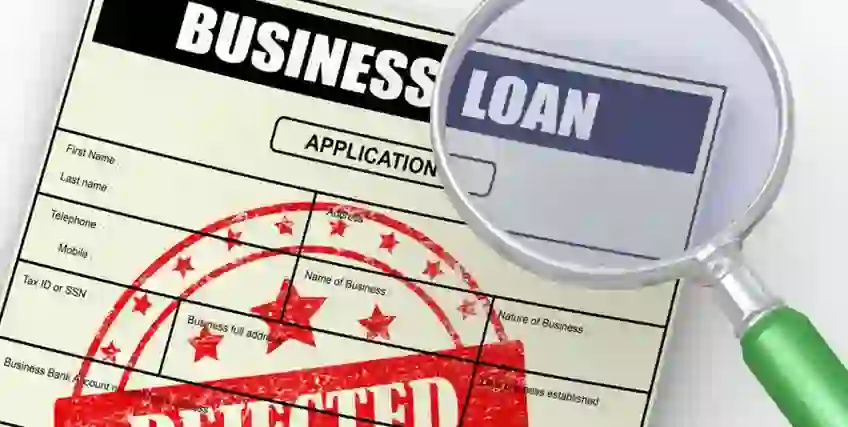How to Obtain Working Capital for Your Small Business
September 05, 2025 | Last Updated on: September 05, 2025

In this article:
- How to measure working capital
- Working capital ratios
- Working capital checklist
- How working capital loans benefit small businesses
- Types of working capital financing
- Where to get a business capital loan
Working capital is the amount of money a business has available at a given time. Calculating working capital is fairly easy. All you need to do is evaluate your business assets and operating expenses with a simple formula (see below). Doing so tells an entrepreneur how much money is available for covering short-term obligations. Working capital shortages can cause serious hardship for a small business owner. Thankfully, business capital loans can provide a fast solution.
In this article, we show small business owners how to measure their working capital. We also cover business financing options in case you need to supplement your working capital with a business capital loan.
How to measure working capital
Working capital is determined by looking at the assets of a small business. Understanding the working capital needs of a business involves forecasting monthly inflows and outflows. Examining current working capital can help you understand whether your business can maintain its current financial position. If not, a working capital loan might help. Working capital can be calculated using the working capital ratio or by creating a working capital checklist.
What is a working capital ratio
Calculating working capital ratios allows small business owners to get a detailed view of their company’s short-term financial position. There are two formulas that you can use to calculate working capital. The first is the current working capital ratio. The second is the net working capital formula. To use them, you’ll need to understand what assets and liabilities are.
- Asset – An asset is a property that has monetary value. Assets appear on a company’s balance sheet and inventories of probate estates. They are classed as current or long-term based on liquidity. Current assets include cash, inventory, accounts receivable, and other items that can be liquidated within 12 months.
- Liability – Liabilities include everything a business owes, like accounts payable, mortgages, payroll, and other financial obligations. Current liabilities are debts that the business will pay in the current year.
Here’s the formula you can use to measure working capital:
Working capital = Current assets ÷ Current liabilities
Assets and liabilities of a small business are used to calculate the working capital. The resulting number shows how healthy your company is. According to industry standards, a balanced, or healthy, working capital ratio is between 1.2 and 1.8. A ratio less than 1.0 means you have negative working capital. In other words, your company might not be able to cover its current liabilities. On the other hand, a ratio greater than 2.0 may mean that your business could do a better job of using its resources.
Net working capital formula
Net working capital is another calculation that shows how much money a business has on hand to meet current liabilities.
Net working capital = Current assets – Current liabilities
The resulting dollar amount is the amount of money available for short-term operational expenses. If the amount is negative, it indicates that your business doesn’t have enough cash to meet current obligations. If that’s the case, it might be a good time to consider a loan or some other type of financing.
Working capital checklist
The working capital ratio is a tool that can help you quickly assess cash flow. A working capital checklist can help you get a better understanding of your current assets and liabilities.
Assets
Reviewing the following current assets will show your business’s current working capital. If assets are not greater than liabilities, then working capital financing may be a practical solution.
- Cash position – The cash you have in your cash register, safe, checking account, and savings account.
- Liquid investments – Review short-term investments like money markets and CDs that mature within the next 12 months.
- Prepaid expenses – Prepaid expenses reduce long-term operational costs and often result in discounts.
- Accounts receivable (AR) – AR describes the money that is owed to your small business. To maintain a healthy accounts receivable balance, be sure to send invoices on time, follow up with customers, and resolve billing disputes right away.
- Inventory – Inventory management is an important part of any organization’s operations. Ideally, a small business should have an equal balance between the on-hand inventory and sales.
Liabilities
A company’s liabilities include the money owed to employees, vendors, government agencies, and banks.
- Accounts payable – Good business practice suggests avoiding late payments to vendors and keeping detailed records of all financial transactions.
- Short-term debt – Business credit cards and lines of credit provide flexible short-term financing for businesses. But be sure to take note of how much credit is available when you are analyzing working capital.
How working capital loans benefit small businesses
If you review your working capital and it shows that you might be short on funds, it might be time to take out a loan. There are many reasons small businesses choose to take advantage of business capital loans.
Growth
Most small business plans include growth as a strategy. But it’s hard to grow if you don’t have funds. Like they say, “it takes money to make money.” Working capital loans can help small business owners do things like:
- buy inventory in bulk
- launch a marketing campaign
- take advantage of an expansion opportunity. Smart decision-making and the ability to act quickly on cash flow shortages are imperative.
Cash flow fluctuations
Some businesses see a lot of seasonal fluctuation in revenue. For example, toy companies have higher sales during the holidays, and landscaping companies get a lot of work in summer. These peaks bring in a lot of cash, but then during the slow season, cash may become tight. A business capital loan can provide the financing needed to cover operational costs when things slow down. And these short-term loans can then be repaid when sales go up again.
Startup costs
If you’re starting a new business, or opening a new location, you’ll have a lot of expenses. For example, you’ll need:
- equipment
- office space
- computers
- software
- inventory
- salaries
- and more!
Even if you have a great product or service, it will still take time to make enough money to pay for all these things. Working capital loans can give startup business owners the financing they need to get their companies up and running.
Unexpected expenses
Unexpected expenses are exactly that—unexpected. But that doesn’t mean you can’t plan for them. If you need to pay for broken equipment, missing inventory, or storm damage, it can eat through your bank account fast. While some unexpected costs, like theft or disaster, are reimbursable through insurance, you may not be reimbursed for an extended period of time. A working capital loan can provide the funds you need to cover emergencies and unexpected costs.
Types of working capital financing
Business capital financing describes any type of small business financing that can be used to cover day-to-day operations.
Invoice factoring
Invoice factoring is a creative financing option that lets small business owners receive cash for unpaid invoices. It works when the borrower sells all or some of its unpaid invoices to a factoring agent at a discount. The invoice factoring agent then collects the invoices and sends the balance to the business, minus fees which are calculated at a set factor rate.
Note: Invoice factoring is not the same as Invoice financing. Invoice financing is a funding option where a business takes out a line of credit using unpaid invoices as collateral. Invoice factoring is not a loan.
Short-term loan
A short-term loan is a type of financing where the borrower receives a lump sum payment upfront. Then, they pay the funds back with monthly payments according to the repayment terms. The interest rate for term loans can be fixed or variable. With fixed loans, the interest rate never changes throughout the life of the loan. With variable rates, the market determines the rate, and it changes often.
Merchant cash advances
A merchant cash advance (MCA) lets businesses get an advance on future credit card sales. The borrower repays the cash advance with weekly or monthly payments. The payment amount is based on a predetermined percentage of sales. MCAs are a great financial tool for borrowers that have bad credit or no business credit history.
SBA loans
The U.S. Small Business Administration guarantees a portion of SBA loans for approved borrowers. SBA loans offer lower down payments and lower interest rates than traditional sources of funding. You can get an SBA loan for any loan amount up to $5 million. SBA loans can be used for working capital, commercial real estate purchases, renovations, and debt refinancing. There are many different SBA loan programs including, SBA 7(a) loans, Microloans, and disaster loans. Each program has different regulations regarding the use of funds and the repayment terms. While a good credit score makes it more likely that you’ll be approved for an SBA loan, there are programs for all credit scores.
Working capital line of credit
A business line of credit is a type of revolving credit. It can be thought of as a cross between a loan and a business credit card. A line of credit does not provide you with a lump sum payment like a traditional loan. Rather, it allows you to withdraw funds as you need them. And you only pay interest on the money that you withdraw. Working capital lines of credit are a great way for new business owners to build credit history. Improved credit will lead to more attractive financing options in the future.
Where to get a business capital loan
A working capital loan is a powerful financial tool. Finding the best place to get a small business loan is easier than most borrowers expect. Small businesses can work with traditional working capital lenders, like banks and credit unions, or alternative funding providers, like Biz2Credit, for several different small business funding options., for several different small business funding options.
Alternative lenders are often preferred by borrowers over traditional business capital loans for working capital needs because they work with different financial institutions and can offer multiple loan options. Business owners that are looking for fast financing often use online lenders. Online lenders typically have an application process and loans can be funded and in their bank account quickly.
Final thoughts
Working capital is the amount of money a business has to cover operational costs. Working capital shortages require a quick response from business owners. Business capital loans are a great way for small businesses to fund growth, cover seasonal fluctuations, and pay for startup costs or unexpected large expenses.
FAQs
What type of loan can be used to supplement seasonal cash flow fluctuations?
To cover expenses like payroll, rent, and other operating costs during periods of lower revenues, a business capital loan or business line of credit are commonly chosen solutions.
Can I pay my working capital loan off before its maturity date?
Yes, but you’ll want to confirm any prepayment penalty that may apply by reviewing the loan documents or contacting the lender.
Will a new business capital loan affect my current working capital calculation?
Yes, once approved for business capital funding, the total amount of the loan that will be paid back in the next twelve months will be included in the liabilities that are subtracted from total assets to calculate working capital.
Does the balance in my business checking account get included in my working capital calculation?
Yes, cash is considered a current asset.




